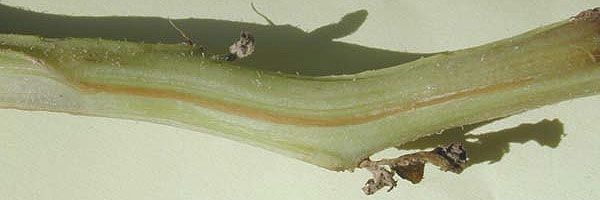
Verticillium spp.
(Verticillium wilt)
- Causal agents and transmission
Two fungi, of the genus Verticillium (Verticillium dahliae and V. alboatrum), are responsible for Verticillium wilt in potatoes.
The primary inoculum usually comes from the soil, where the fungus can survive for several years in the form of microsclerotia on crop residues or weeds. It can also be borne by seed potato tubers.
The infection may start through the sprout, the root system or the wounds. In time, the fungus gets into the vascular system and then spread systematically leading to complete wilt.
- Significance
Verticillium wilt can be the cause of significant yield losses under high disease pressure on susceptible cultivars. Intensification of potato production with very short or no rotation may lead to high incidence of soil-borne diseases and occasionally be expanded by co-infection with root lesion nematodes (Pratylenchus penetrans) or with the potato cyst nematodes, Globodera spp.





